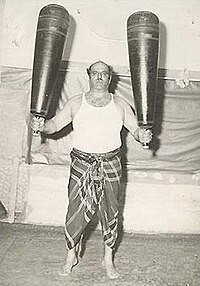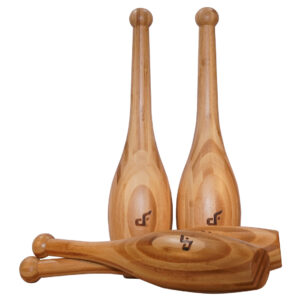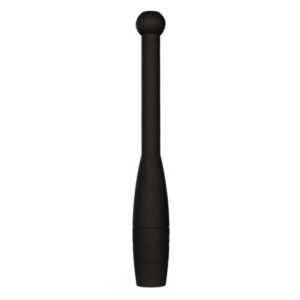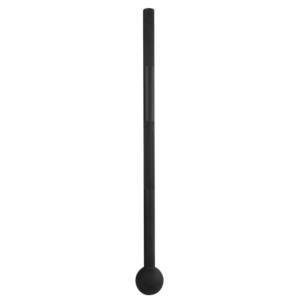In the realm of unconventional yet highly effective fitness tools, Persian meels stand out as a fascinating piece of history and a potent instrument for building strength, coordination, and balance.
Often associated with Persian warrior training, these elongated clubs have a rich history that dates back centuries.
This article will delve into the origins, training techniques, benefits, and modern resurgence of Persian meels, shedding light on their enduring appeal in the world of fitness.
Persian meels, also known as “Indian clubs” or “Iranian clubs,” trace their origins to ancient Persia, modern-day Iran. They have a history that spans more than a millennium and were initially used for both combat and physical training.

Persian warriors, particularly the elite soldiers known as “Zurkhaneh Pahlavans,” incorporated meel training into their regimens. These clubs were wielded to build the strength, endurance, and agility needed for combat.
Persian meels are typically long clubs with a uniform diameter, resembling a larger version of modern Indian clubs. They are traditionally crafted from hardwood, such as oak, to ensure durability.
Persian meels come in various weights, ranging from a few pounds to over fifty pounds each. The choice of meel weight depends on the practitioner’s skill level and fitness goals.
Persian meel training typically starts with basic swinging exercises. These movements involve swinging the meels in various patterns and directions to engage different muscle groups. The goal is to develop control and coordination.
Circular movements, such as circular swings and mills, are fundamental to meel training. These exercises challenge the upper body’s strength and flexibility while enhancing balance and coordination.
Holding and controlling the meels require a strong grip. Practitioners often perform specific exercises to improve their hand strength and forearm endurance.
As proficiency increases, practitioners can progress to more complex sequences that involve fluid transitions between different meel movements. These sequences require a high level of coordination and focus.
Persian meels are renowned for their ability to build upper body strength. The swinging and circular movements engage muscles in the shoulders, arms, and chest, leading to improved muscle tone and power.
Meel training challenges coordination, balance, and spatial awareness. Practitioners develop a heightened sense of control over their movements, which can be beneficial for various sports and activities.
Holding and manipulating the meels effectively require a strong grip. Improved grip strength can have practical applications in daily life and other sports.
Many meel exercises engage the core muscles, promoting stability and improved posture. A strong core is essential for preventing injuries and supporting overall fitness.
The dynamic and stretching nature of meel movements can enhance joint mobility and flexibility, reducing the risk of injury and improving overall range of motion.
Meel training demands concentration and mental focus, making it a meditative practice that can promote relaxation and reduce stress.
Persian meel training has experienced a resurgence in recent years among fitness enthusiasts and athletes. Its effectiveness in building functional strength and enhancing overall physical conditioning has attracted individuals from various backgrounds.
Contemporary fitness professionals have adapted Persian meel training to suit modern fitness goals. Gyms and fitness centers offer meel-inspired workouts that incorporate these clubs as a versatile fitness tool.
The accessibility of online tutorials and resources has made Persian meel training more widely available to individuals interested in exploring this ancient fitness practice.
Safety should always be a priority. Beginners should start with lighter meels to learn the basics and reduce the risk of injury. Warming up and stretching are essential.
If you’re new to Persian meel training, consider seeking guidance from a certified instructor or an experienced practitioner who can teach you proper techniques and ensure that you’re using correct form.
Begin with basic swinging exercises to build a strong foundation. Focus on developing control and gradually progress to more advanced movements.
Consistent practice is key to reaping the benefits of meel training. Dedicate time to regular workouts and stay patient as you develop your skills.
Persian meels, with their ancient roots and modern resurgence, serve as a bridge between the past and the present in the world of fitness. These graceful yet powerful clubs have evolved from weapons of war into tools for personal development and physical well-being.
Whether you’re an athlete seeking to enhance your performance, a fitness enthusiast looking for a unique workout experience, or someone interested in connecting with a rich cultural tradition, Persian meel training offers a captivating journey into the heart of an ancient practice—one that continues to empower individuals on their quest for strength, coordination, and balance in body and mind.


